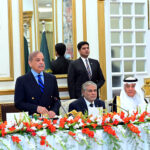NEW YORK, Dec 20 (APP):In a new development, young Kashmiris are now providing protective cover to freedom fighters pursued by Indian occupation troops in cities and villages across Kashmir as they attempt to quell the growing insurgency, according to a leading American newspaper.
“Violence is rising again in the region, where India has presided over a bloody campaign to hunt down those fighting a quixotic battle for independence,” The New York Times said in a dispatch from Balsoo in Indian occupied Kashmir, while noting security officials’ claim that over 240 militants have been killed this year, the highest annual toll in more than a decade.
“But along with the combatants” deaths has come a new set of casualties: those of civilians who try to defend them,” Times’ correspondent Sameer Yasir wrote.
“Gone are the days when the sight of an armored vehicle was enough to send entire villages into hiding. Now, civilians are rushing in front of the heavily armed trucks, using stones and their own bodies to try to block security forces,” the dispatch said.
Last week, seven civilians were killed after inserting themselves between militants and advancing Indian troops, it said “This is a new phenomenon,” Sheikh Showkat Hussain, an international law professor at the Central University of Kashmir, was quoted as saying in the Times. “Civilians have always supported militants, but never with such conviction.”
Citing rights group, the dispatch said that this year at least 148 civilians have been killed, many teenagers.
In June, the dispatch pointed out, the United Nations released its first report on atrocities committed in Kashmir, calling for an international investigation into reports of sexual violence and torture.
Indian security forces were sharply criticized for using excessive force on protesters, and particularly for firing shotguns into crowds, with hundreds of people struck in the eyes by pellets, leaving many of them blind.
After the release of the United Nations report, the Indian government called its contents “fallacious, tendentious and motivated.”
Last year, Bipin Rawat, the Indian Army chief, said that people who “obstruct our operations” would be “treated as over-ground workers” — in other words, collabborators, it was pointed out.
In 2016, the Times recalled that the nature of civilian protests took a turn when Burhan Muzaffar Wani, a charismatic militant leader with a vast following on social media, was fatally shot in the Indian-administered part of Kashmir.
“Kashmiris poured into homegrown militant groups like Hizbul Mujahideen. A network of locals who fed information to Indian intelligence officers temporarily broke down, allowing the number of militants to swell…”
Yasin Malik, a Kashmiri leader who led an armed struggle against Indian security forces in the late 1980s and early 1990s, said the ranks of militant groups would continue to grow.
A peaceful resolution in Kashmir became impossible, he said, when locals who tried demonstrating against the police continued to meet “brute force.”
“There is no space for a nonviolent political movement,” he was quoted as saying. “They are fighting because everyone has failed them.”
Citing police, the Times said there were 250 known militants. “Though Indian security forces stationed in the valley have cracked down on armed insurgents, outnumbering the militants 1,000 to one, they are struggling to stem fresh recruitment,” it said.
After the death in Balsoo of his brother Nauman Ashraf Bhat while trying to protect a freedom fighter, his brother Nadeem joined the cause.
“The sentiment of freedom is in our blood,” Nadeem said. “It will outlive us.”




